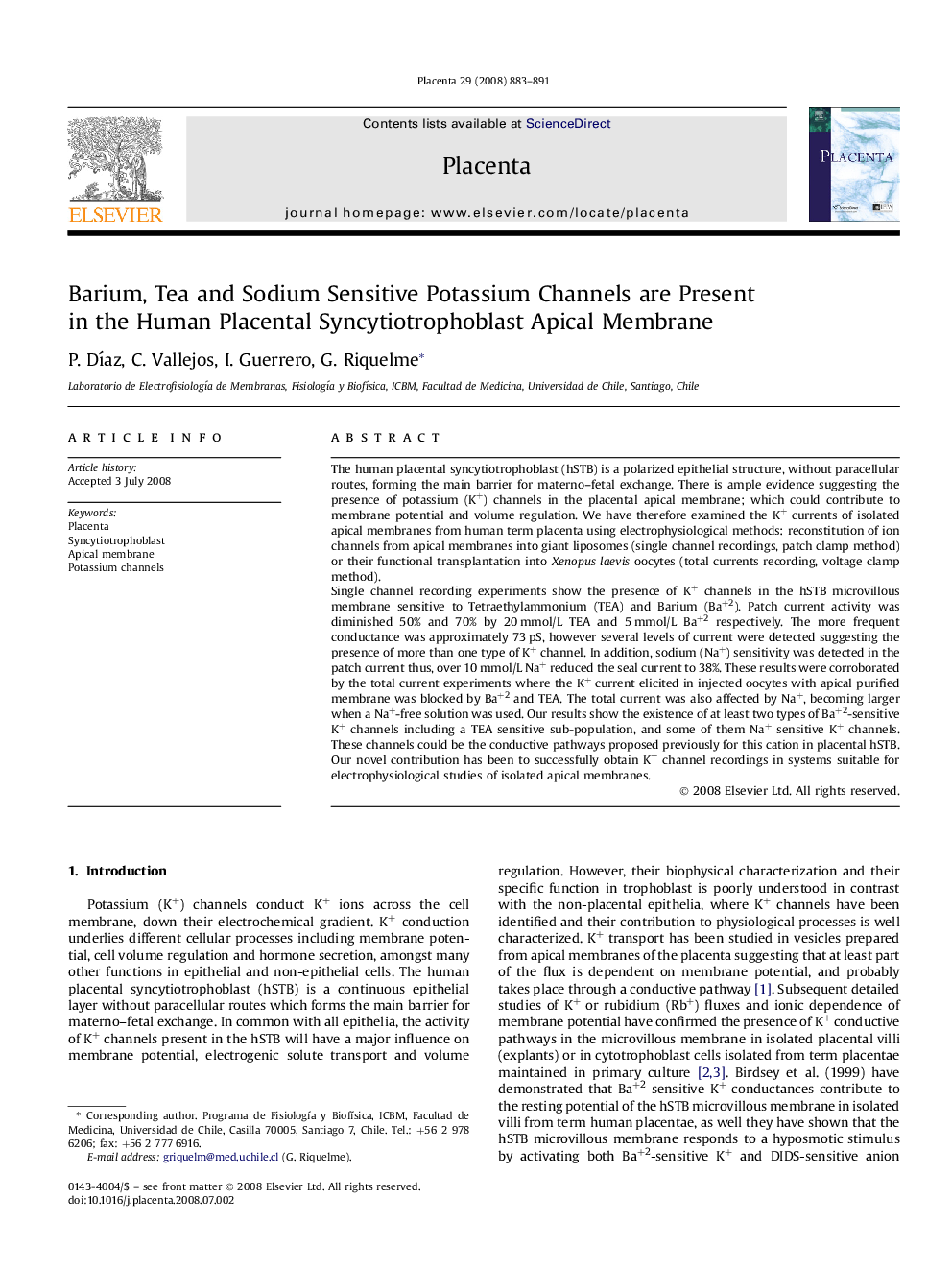| کد مقاله | کد نشریه | سال انتشار | مقاله انگلیسی | نسخه تمام متن |
|---|---|---|---|---|
| 2790048 | 1154540 | 2008 | 9 صفحه PDF | دانلود رایگان |

The human placental syncytiotrophoblast (hSTB) is a polarized epithelial structure, without paracellular routes, forming the main barrier for materno–fetal exchange. There is ample evidence suggesting the presence of potassium (K+) channels in the placental apical membrane; which could contribute to membrane potential and volume regulation. We have therefore examined the K+ currents of isolated apical membranes from human term placenta using electrophysiological methods: reconstitution of ion channels from apical membranes into giant liposomes (single channel recordings, patch clamp method) or their functional transplantation into Xenopus laevis oocytes (total currents recording, voltage clamp method).Single channel recording experiments show the presence of K+ channels in the hSTB microvillous membrane sensitive to Tetraethylammonium (TEA) and Barium (Ba+2). Patch current activity was diminished 50% and 70% by 20 mmol/L TEA and 5 mmol/L Ba+2 respectively. The more frequent conductance was approximately 73 pS, however several levels of current were detected suggesting the presence of more than one type of K+ channel. In addition, sodium (Na+) sensitivity was detected in the patch current thus, over 10 mmol/L Na+ reduced the seal current to 38%. These results were corroborated by the total current experiments where the K+ current elicited in injected oocytes with apical purified membrane was blocked by Ba+2 and TEA. The total current was also affected by Na+, becoming larger when a Na+-free solution was used. Our results show the existence of at least two types of Ba+2-sensitive K+ channels including a TEA sensitive sub-population, and some of them Na+ sensitive K+ channels. These channels could be the conductive pathways proposed previously for this cation in placental hSTB. Our novel contribution has been to successfully obtain K+ channel recordings in systems suitable for electrophysiological studies of isolated apical membranes.
Journal: Placenta - Volume 29, Issue 10, October 2008, Pages 883–891